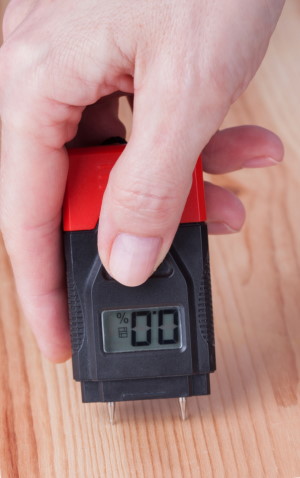
As a homeowner, you already know that the condition of your wood floors instantly influences the beauty of your house. While wood floors add a cozy feel and eye-catching appearance to your home, they suffer from inherent issues that can be challenging to deal with. One of these issues is dehydration.
Five years into our marriage, my wife and I bought a beautiful 20-year-old house on 3 acres. It had oak wood floors and a whole-house HVAC humidifier system to help maintain the ideal humidity levels year-round.
However, in the wintertime, the house still struggled to stay above 40% humidity and the boards would creak a little more when you walked on them.
Additionally, the boards by the windows of the breakfast nook were faded and dried out. We had to refinish the entire breakfast nook.
I got a pretty good understanding of what dries out wood floors and how to rehydrate them.
Hiring an expert will cost money. The good news is that with a bit of knowledge and the right approach, any homeowner can rehydrate their own wood flooring. Sometimes you can rehydrate them without refinishing them.
The process isn’t as hard as you might have imagined. A lot of it has to do with controlling humidity levels in your house.
Here are a few economical things you can do to rehydrate your wooden floors.
How To Know If Your Wooden Floors are Dehydrated
According to the National Wood Floor Association, if you suspect that your wooden floors are dehydrated, the best approach is to use a hygrometer to measure the moisture content of your floors. Generally, 50 percent humidity is the right level. If it is below 50%, you may have a problem with the finish and mainly the appearance of your floor.
Visual signs of dehydration include gripping, cupping, squeaking, and shrinking. In some extreme cases, the wooden floor will also show signs of cracking. If you ever notice cracks in your wooden floor, it is time to start working on hydrating it right away.
High levels of moisture (such as a water leak) are also detrimental to the health of your wooden floors. So, both extremes of a dried floor or too much moisture, need to be avoided.
Cracked floors indicate massive dehydration. Steps should be taken right away to ensure that your wooden floor is rehydrated to the right level.
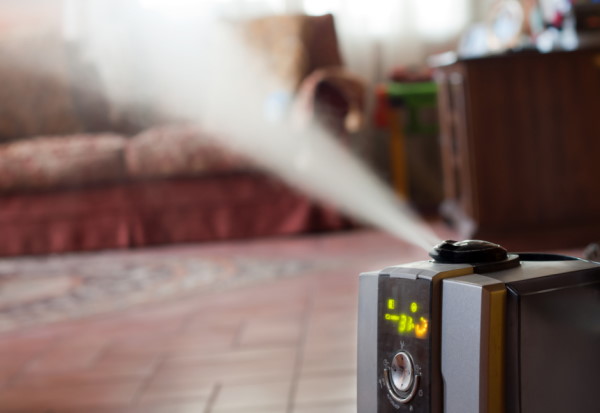
How To Rehydrate Your Hardwood Floor?
There are a few techniques you can use today to restore and rehydrate your wood floors. Below we go into some of the most effective recommendations. Interestingly rehydrating wood floors isn’t all that hard!
Humidifiers and Dehumidifiers
You need to increase the percentage of moisture content of the wood planks in your flooring. The best way to rehydrate your wood floor is to add moisture to the air. The ideal percentage of humidity for wood floors is between 30-50%
Dehumidifiers decrease the humidity of the air, while humidifiers increase the moisture content of the air and, consequently, your floor.
There are various types of humidifiers including steam, evaporative and ultrasonic. They all work equally well. I try to add a 1-gallon humidifier for every 600 square feet of house square footage during the winter. Every morning, I fill them up and turn them on.
At the least, place a humidifier in the room with a dry wooden floor.
Using Water-Based Polyurethane
In addition to humidifiers, you can also use water-based polyurethane. Using a water-based product can rehydrate wood floors while helping retain their original glossy look. At the same time, water-based poly helps to minimize the loss of moisture from the floor into the air. You can also use this method alongside vinegar cleaning for a seamlessly clean finish.
To refinish a floor with polyurethane, it will need to be sanded down. Generally, you will want to rent a large floor sander as they create the most professional look in the least amount of time.
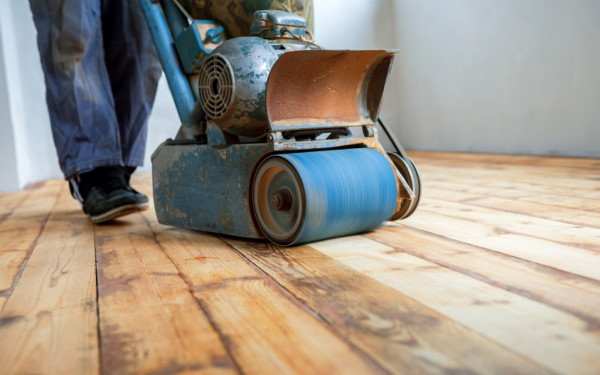
Using Oil-based Urethane on Wood Floor
The reason to use oil-based urethane also referred to as oil-modified urethane, is that it will seal the wood surface, which helps avoid more or excessive moisture loss, similar to using water-based polyurethane. The use of urethane is also an excellent choice for restoring the glossy look of a hardwood floor. It takes a bit more effort to apply the finish, compared to its water-based poly counterpart.
Note: Regardless of if you choose to use oil-based urethane or water-based poly finishes, it is important to sand off the surface before applying a fresh coat.
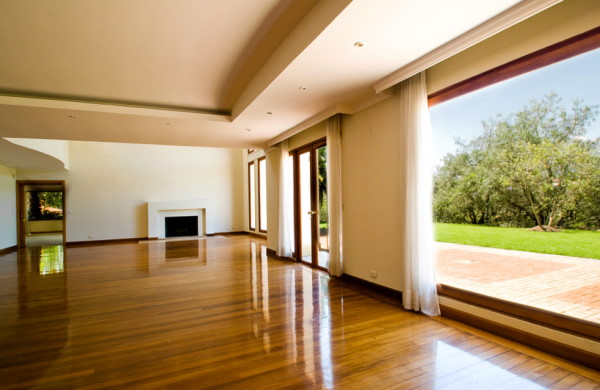
Boiling Hot Water
Some people even recommend using boiling water to rehydrate hardwood flooring. After rehydrating the floor, you should use a dry cloth to wipe it up. While this may sound weird, allow us to explain how it works.
You start by pouring around a gallon or two of water into a pot and boiling it. Once the water starts boiling, it will release water vapor into the air, raising the room’s humidity. The hardwood floor will soak up the excess moisture and eventually revitalize it. The drawback is that your hardwood floor needs to be near your kitchen, or you need to find a way to place a large boiling pot of water in your living room!
Once the hardwood floor has soaked up the humidity for maybe an hour or so, it can then be wiped down with a piece of cloth.
Cleaning Hardwood Floors Using Vinegar
Many homeowners aren’t aware that they can rehydrate their hardwood floors using a vinegar solution. However, this only works during the early stages of dehydration, when there are only a few gaps or crevices. You will want to remove all the furniture from the area, then sweep the floor to remove any surface debris.
Once the floor is clean, you fill a bucket of water and add white vinegar with a 1:10 ratio. Make sure to mix the water after adding vinegar, immerse a mop into it and start mopping the floor with it. The moisture from the solution will then be absorbed into the floor through the fissures and crevices, kickstarting the rehydration process.
Ensure that you wring the mop properly to prevent the moisture from being counterproductive. Once you are done, dry the floor with a dry cloth.
Depending on how this turns out, you might want to do a second round a few days later.
It is possible to put too much water on a wood floor, so do this in stages over several days until the wood shows signs of rehydration.
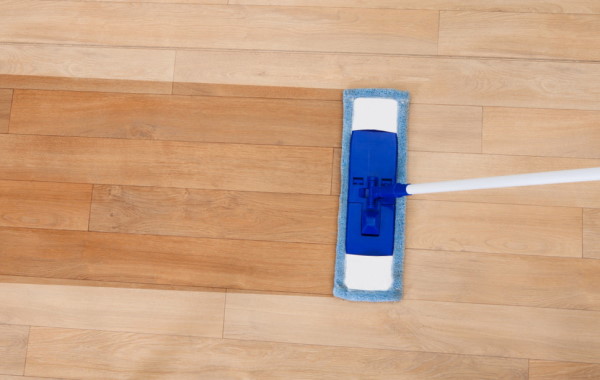
Conclusion
Wooden flooring can become too dry if exposed directly to sunlight. The sun’s heat through the windows dries out the wood faster than anything else. You need to shade your floor from the sun’s rays by using window treatments. Less sunlight means that the hardwood floor will retain its moisture, consequently appearing shiny and healthy.
 Skip to content
Skip to content

